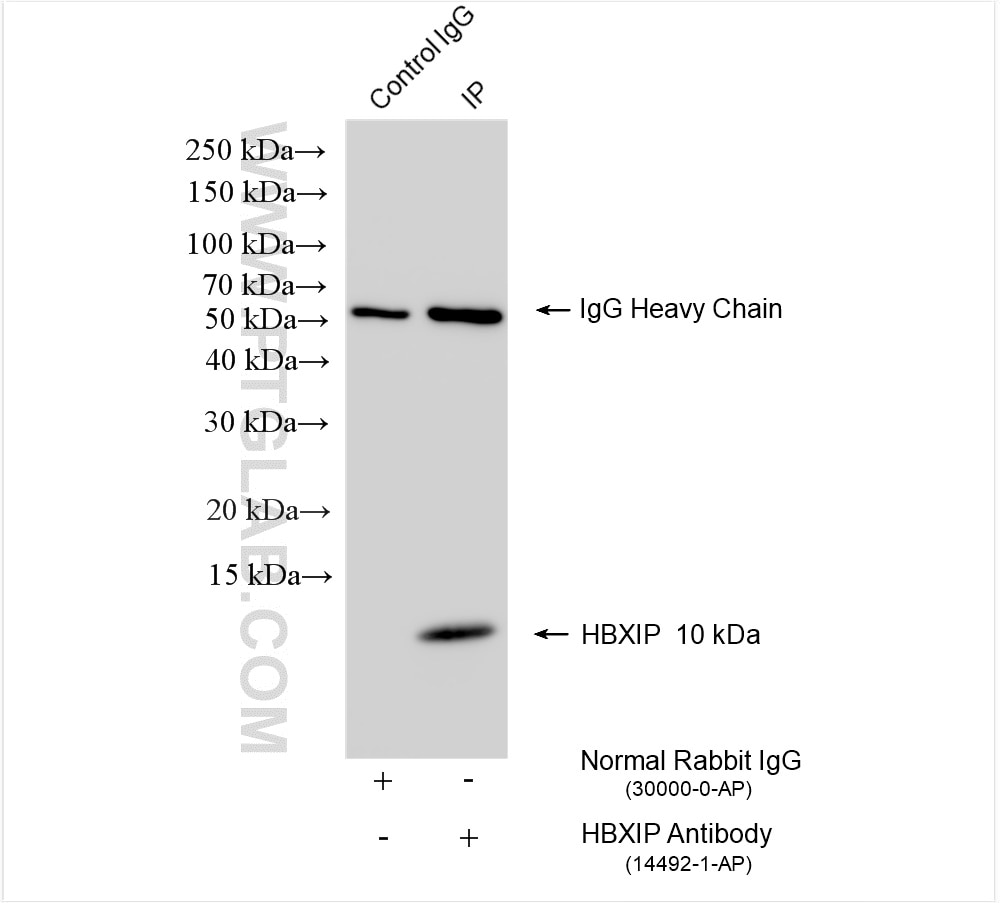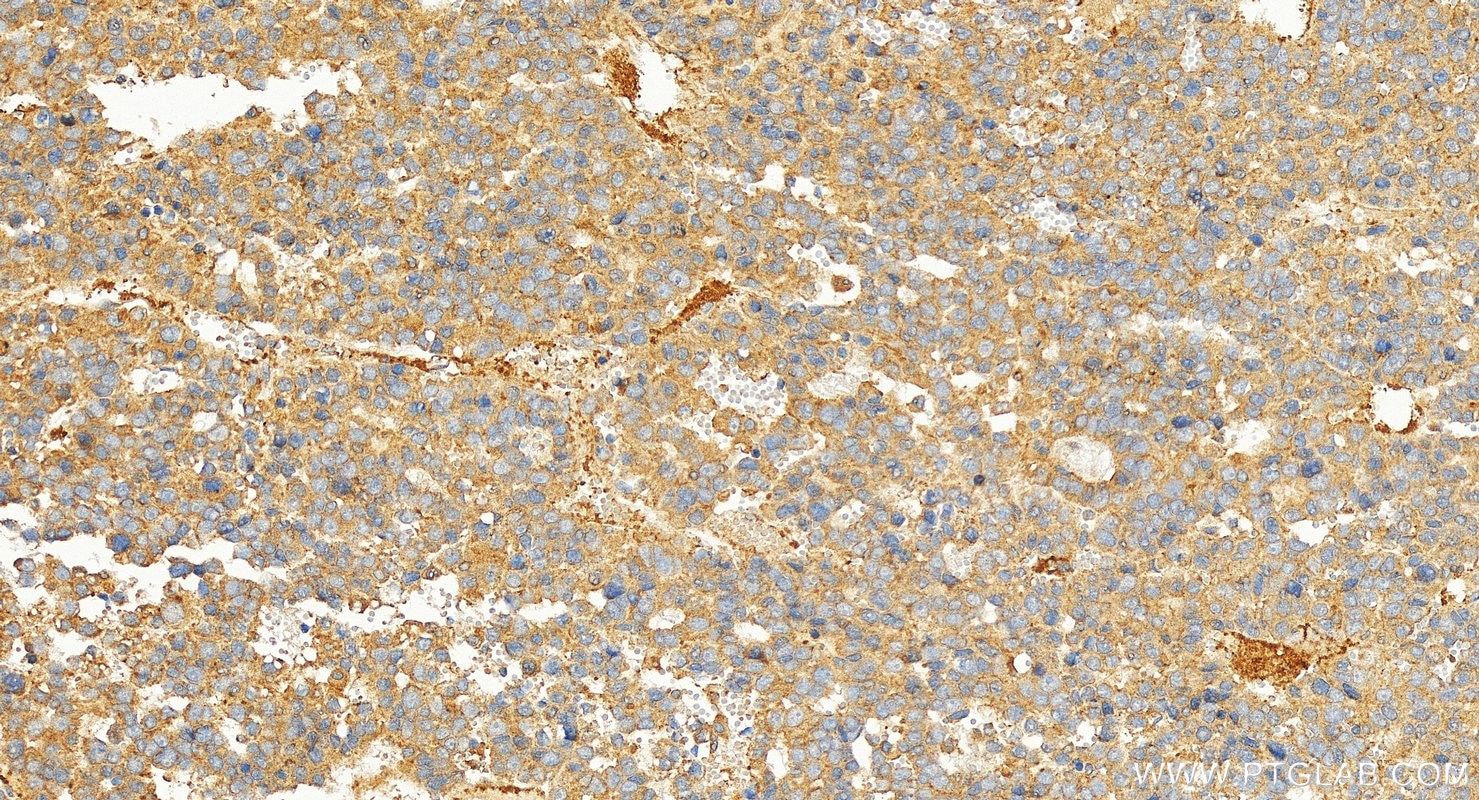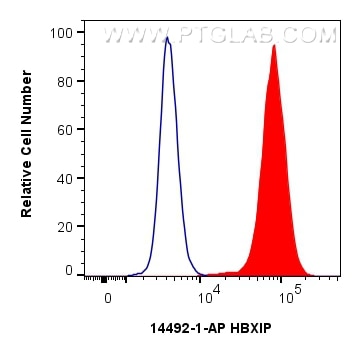Tested Applications
| Positive WB detected in | K-562 cells, U2OS cells |
| Positive IP detected in | K-562 cells |
| Positive IHC detected in | human hepatocellular cancer Note: suggested antigen retrieval with TE buffer pH 9.0; (*) Alternatively, antigen retrieval may be performed with citrate buffer pH 6.0 |
| Positive FC (Intra) detected in | MCF-7 cells |
Recommended dilution
| Application | Dilution |
|---|---|
| Western Blot (WB) | WB : 1:500-1:1000 |
| Immunoprecipitation (IP) | IP : 0.5-4.0 ug for 1.0-3.0 mg of total protein lysate |
| Immunohistochemistry (IHC) | IHC : 1:200-1:800 |
| Flow Cytometry (FC) (INTRA) | FC (INTRA) : 0.80 ug per 10^6 cells in a 100 µl suspension |
| It is recommended that this reagent should be titrated in each testing system to obtain optimal results. | |
| Sample-dependent, Check data in validation data gallery. | |
Published Applications
| KD/KO | See 4 publications below |
| WB | See 10 publications below |
| IHC | See 8 publications below |
| IF | See 2 publications below |
| IP | See 1 publications below |
Product Information
14492-1-AP targets HBXIP in WB, IHC, IF, FC (Intra), IP, ELISA applications and shows reactivity with human, mouse, rat samples.
| Tested Reactivity | human, mouse, rat |
| Cited Reactivity | human |
| Host / Isotype | Rabbit / IgG |
| Class | Polyclonal |
| Type | Antibody |
| Immunogen |
CatNo: Ag5894 Product name: Recombinant human HBXIP protein Source: e coli.-derived, PGEX-4T Tag: GST Domain: 1-173 aa of BC062619 Sequence: MEPGAGHLDGHRAGSPSLRQALCDGSAVMFSSKERGRCTVINFVPLEAPLRSTPRSRQVTEACGGEGRAVPLGSEPEWSVGGMEATLEQHLEDTMKNPSIVGVLCTDSQGLNLGCRGTLSDEHAGVISVLAQQAAKLTSDPTDIPVVCLESDNGNIMIQKHDGITVAVHKMAS Predict reactive species |
| Full Name | hepatitis B virus x interacting protein |
| Calculated Molecular Weight | 10 kDa |
| Observed Molecular Weight | 12 kDa |
| GenBank Accession Number | BC062619 |
| Gene Symbol | HBXIP |
| Gene ID (NCBI) | 10542 |
| RRID | AB_2878062 |
| Conjugate | Unconjugated |
| Form | Liquid |
| Purification Method | Antigen affinity purification |
| UNIPROT ID | A0A8Z5A536 |
| Storage Buffer | PBS with 0.02% sodium azide and 50% glycerol, pH 7.3. |
| Storage Conditions | Store at -20°C. Stable for one year after shipment. Aliquoting is unnecessary for -20oC storage. 20ul sizes contain 0.1% BSA. |
Background Information
HBXIP, also named as XIP, belongs to the HBXIP family. It is originally identified by its interaction with the C-terminus of hepatitis B virus (HBV) X protein (HBx). HBXIP is a regulator of centrosome dynamics and cytokinesis. HBXIP is able to up-regulate S100A4 though activating STAT4 and inducing DNA methylation of PTEN. HBXIP has multiple isoforms with molecular weights of 8-10 kd and 18 kd. This antibody mainly recognizes the 10 kd isoform.
Protocols
| Product Specific Protocols | |
|---|---|
| FC protocol for HBXIP antibody 14492-1-AP | Download protocol |
| IHC protocol for HBXIP antibody 14492-1-AP | Download protocol |
| IP protocol for HBXIP antibody 14492-1-AP | Download protocol |
| WB protocol for HBXIP antibody 14492-1-AP | Download protocol |
| Standard Protocols | |
|---|---|
| Click here to view our Standard Protocols |
Publications
| Species | Application | Title |
|---|---|---|
Autophagy KAT7-mediated CANX (calnexin) crotonylation regulates leucine-stimulated MTORC1 activity. | ||
Front Oncol Germacrone Regulates HBXIP-Mediated Cell Cycle, Apoptosis and Promotes the Formation of Autophagosomes to Inhibit the Proliferation of Gastric Cancer Cells. | ||
J Biol Chem The oncoprotein HBXIP uses two pathways to up-regulate S100A4 in promotion of growth and migration of breast cancer cells. | ||
Cancer Lett The oncoprotein HBXIP up-regulates Skp2 via activating transcription factor E2F1 to promote proliferation of breast cancer cells.
| ||
Int J Oncol The oncoprotein hepatitis B X-interacting protein promotes the migration of ovarian cancer cells through the upregulation of S-phase kinase-associated protein 2 by Sp1.
| ||
Am J Cancer Res Elevated HBXIP expression is associated with aggressive phenotype and poor prognosis in esophageal squamous cell carcinoma. |










